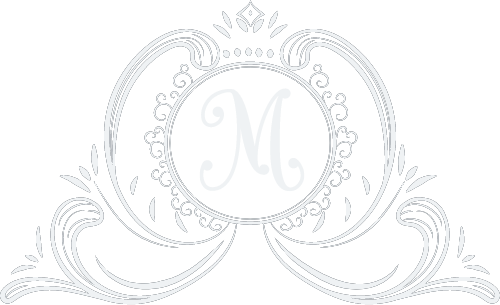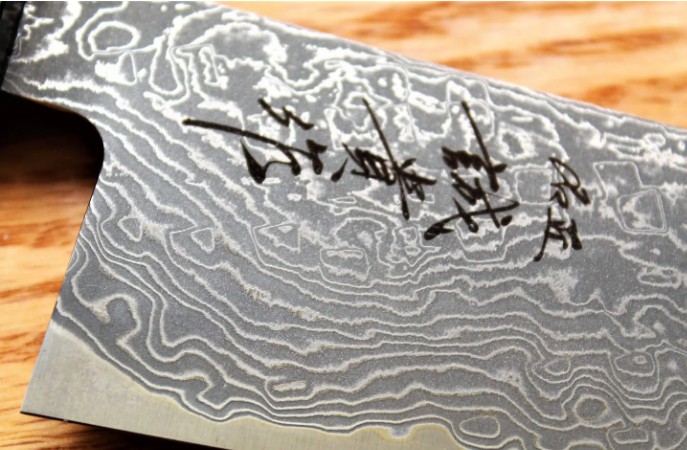The Blade and the Craft: A Gentleman’s Reflection on the Chef’s Knife
There’s a quiet elegance to a well-balanced knife. It’s not the flash of the blade under kitchen light or the intricate ripple of steel that catches the eye. It’s something subtler—a feeling you get when it settles into your hand, familiar and firm, like the handshake of an old friend. There’s no ceremony to it. Just readiness.
If you’ve spent any meaningful time in the kitchen—alone or in company—you’ll know the truth: a chef’s knife is not just a tool. It’s a companion. One that, over time, begins to anticipate your movements, your moods, even the way your wrist turns after a long day. Some men build their lives around fast cars or well-cut suits. Me? I’ve grown fond of the blade.
Now, before this turns into a sermon on steel and sharpening stones, allow me a confession. I own several knives—German and Japanese, carbon and stainless—but it’s the Damascus Japanese chef knife and its squared-off cousin, the Nakiri, that have earned pride of place in my kitchen. Not because they’re trendier or more expensive (though, admittedly, they are both), but because they speak to something I admire: grace under pressure.
But to understand that affection, let’s rewind a bit—to the two great knife cultures of the culinary world.
The German: Strength in Every Slice
The German chef’s knife is the kind of tool you’d want at your side during a storm. Sturdy. Confident. Slightly overbuilt in a way that feels reassuring, not cumbersome. Like a Mercedes G-Class or an old Leica, it favors tradition over flourish. And rightly so.
Brands like Wüsthof and Zwilling J.A. Henckels have built legacies on this philosophy—knives with thick spines and curved bellies, designed to rock effortlessly across the board. The edge, often honed to a 20-degree angle, favors resilience over surgical sharpness. You don’t so much slice with a German knife as move through your ingredients. Root vegetables tremble under its weight. Chicken bones? No trouble.
It’s a design born of utility: a knife that can break down a leg of lamb, crush a garlic clove with the side of its blade, and still be polished enough to chiffonade herbs come evening.
The steel—usually high-carbon stainless—is engineered to hold up. Not just in performance, but in mood. You don’t baby a German knife. It’s made to work. To get wet. To hit the sink unceremoniously and be called back to duty minutes later. It’s less of a showpiece and more of a faithful foot soldier. And in many kitchens, that’s exactly what’s needed.
The Japanese: Precision as Philosophy
Now shift scenes—quietly, respectfully—to Japan.
Where the German blade is robust and muscular, the Japanese chef’s knife is lithe and deliberate. It’s less a knife and more a conversation with your ingredients. Every movement is thoughtful. Intentional. The handle nestles delicately into your grip. The edge, honed to a precise 15 degrees, glides through produce like a whisper.
Japanese knives, especially the Gyuto (the equivalent of the Western chef’s knife), are forged from harder steel. That hardness allows for a finer edge—an edge that can cleanly slice through a ripe tomato without bruising the flesh beneath. It’s this delicacy, this precision, that makes it the favored blade in sushi houses and high-end kitchens across the world.
But that sharpness comes with its own demands. A Japanese knife, particularly one crafted with a thin blade, is not built for abuse. Drop it. Mistreat it. Use it to pry open a coconut—and it will remind you that elegance has its price. These knives require reverence. Care. A sense of partnership between craftsman, user, and ingredient.
In return, they offer beauty. Not just in how they look, but in how they move. There’s poetry in the rhythm of a Nakiri chopping scallions with machine-like consistency, or a Yanagiba slicing through tuna with the ease of silk falling from a bolt.
The Japanese knife doesn’t shout. It doesn’t flex. It simply is—quietly mastering the task at hand.
Where Art Meets Function: The Damascus Allure
And then… there’s Damascus.
The name alone sounds like a whispered secret passed between craftsmen. Its origin lies not in Japan or Germany but in ancient weaponry—blades folded and forged to combine strength with flexibility, beauty with lethality. Today, Damascus steel in kitchen knives has less to do with battlefield performance and more to do with the marriage of form and function. But the allure is no less potent.
What distinguishes a Damascus knife is its pattern—a wavy, marbled ripple of steel layers that mimic the flow of water or the lines of a fingerprint. Each blade is unique. No two patterns are alike. And therein lies the magic. You’re not just holding a knife. You’re holding an heirloom.
Technically speaking, the process involves layering hard and soft steels, forging them together, and folding the billet repeatedly. The result? A blade that combines the sharpness and edge retention of high-carbon steel with the toughness and flexibility of softer alloys. In other words, you get the best of both worlds—beauty and performance.
And yes, it helps that every time you pick one up, it feels like you’re stepping into the shoes of a master craftsman. Or, at the very least, someone who respects the ceremony of the kitchen.
Why I Choose Damascus Japanese Blades
I didn’t fall in love with my Damascus chef’s knife in a shop or through some flashy online ad. It was in the middle of a quiet Thursday evening, slicing shallots for a pan sauce. One cut, and the blade simply glided. No tug. No hesitation. Just an effortless draw that made the knife feel like an extension of my hand. I paused, oddly moved.
From that point on, it was no longer just a knife. It was my knife.
The Nakiri came later—a gift, in fact, from a friend who knew how often I cooked vegetarian at home. It was heavier than I expected, almost cleaver-like in shape but without the brutish feel. Its straight edge and squared tip made chopping onions—my least favorite task—an oddly meditative experience. Everything fell into uniform cubes. No mess. No resistance.
These knives, both wrapped in flowing Damascus waves, became part of my ritual. A morning omelette. A weekend roast. Even something as trivial as slicing an apple felt… purposeful. And perhaps that’s the point. Great tools don’t just perform. They elevate. They change the way you move, the way you think. They bring grace to repetition.
And of course, they look damned good doing it.
Beyond Steel: What These Knives Represent
There’s a certain pride in owning something made with care. In a world obsessed with disposability, fast fashion, and mass production, the Damascus Japanese blade stands as a quiet rebellion. It reminds you that craft still matters. That beauty still belongs in the everyday.
And while performance is paramount, what keeps me coming back—day after day, meal after meal—is the feeling. The ritual of honing the edge on a whetstone. The soft whisper of steel against vegetables. The weight of history in your palm.
Owning a fine knife, much like a tailored suit or a vintage watch, is not about status. It’s about connection. To process. To precision. To the stories behind the steel.
When I cook with these blades, I don’t just prepare food. I slow down. I focus. I listen. The chaos of the day fades, and the kitchen becomes a space of clarity and rhythm. That, to me, is the real joy.

